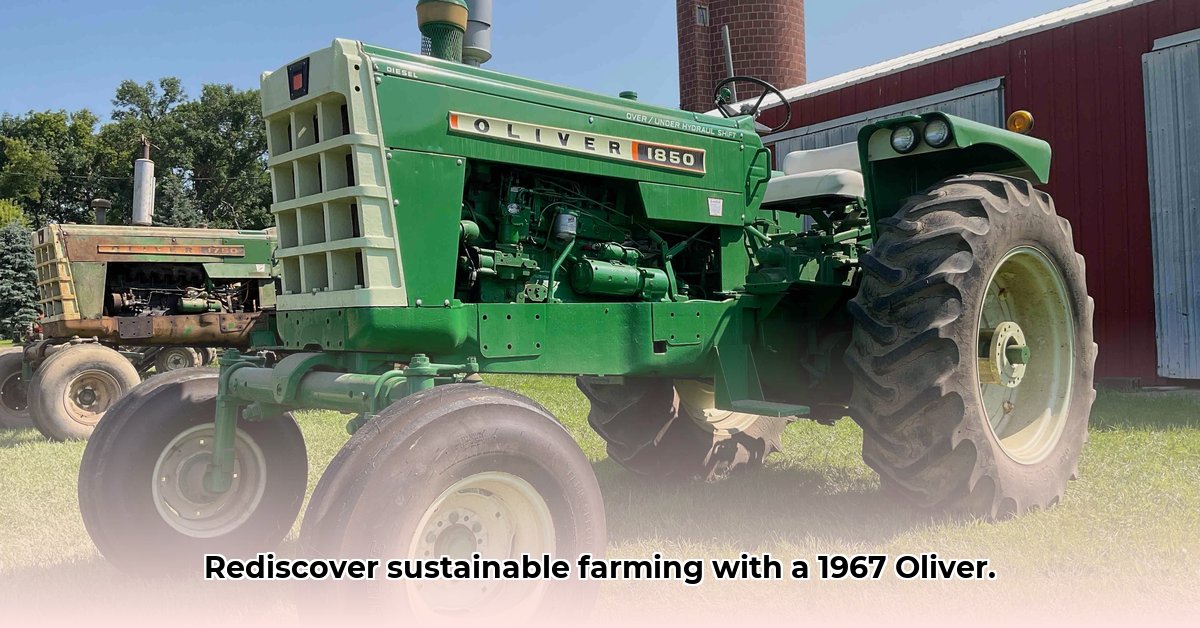
The 1967 Oliver tractor: a sturdy workhorse from a bygone era, surprisingly relevant in today's sustainable agriculture movement. This guide explores its capabilities, maintenance, and suitability for modern farming practices. See more vintage tractor photos here.
A Blast from the Past: Understanding the 1967 Oliver
The 1967 Oliver tractor represents a simpler time in agriculture, before GPS guidance and climate-controlled cabs. Built to endure, these tractors offer dependability and a unique charm. Understanding its history is key to appreciating its potential in modern sustainable farming. Different models offered varying horsepower, typically powered by gasoline or diesel engines.
Technical Specifications and Capabilities
Under the hood, you'll find a powerful engine (horsepower varied by model), likely a gasoline or diesel motor. The transmission was usually manual, offering a direct connection with the machine. The three-point hitch system, standard on most modern tractors, enabled easy attachment of implements. The power takeoff (PTO) shaft powered additional equipment. Remember to consult model-specific manuals for precise horsepower and specifications. Isn't the direct mechanical connection of older tractors appealing compared to modern electronic controls?
Maintenance and Repair: Keeping the Old Girl Running
Maintaining a vintage tractor like the 1967 Oliver demands commitment. Parts might be less readily available than for newer tractors, requiring searches on online marketplaces, specialized suppliers, or salvage yards. Regular maintenance, including oil changes and tune-ups, is crucial. Restoration can be rewarding but expensive. Budget accordingly!
1967 Oliver vs. Modern Tractors: A Comparative Analysis
How does a 1967 Oliver compare to modern tractors? Modern tractors boast significantly better fuel efficiency and often incorporate advanced engine technologies and computer-controlled systems. Operator comfort is also superior in modern tractors, with climate-controlled cabs and advanced ergonomics. However, this sophistication comes at a cost; increased repair bills and complex maintenance. The environmental impact is another key factor. Older tractors, lacking modern emission controls, might have a larger carbon footprint, although the initial manufacturing impact of a new tractor needs to be weighed against this.
The 1967 Oliver in Sustainable Agriculture: A Niche Application
The 1967 Oliver finds a niche in sustainable, small-scale farming. Its simplicity and mechanical nature make it ideal for smaller operations where its horsepower is sufficient. It's perfect for tasks like tilling smaller plots, cultivating specialized crops, or working with older, less demanding implements. It may be very suitable for reduced-till farming or cultivating heritage crops and running older, less technology-dependent equipment. The potential reduction in fuel consumption compared to large horsepower modern equipment should be considered.
Weighing the Pros and Cons: Is a 1967 Oliver Right for You?
Here's a summary of the benefits and drawbacks:
| Pros | Cons |
|---|---|
| Lower initial purchase price | Parts availability can be challenging |
| Simpler mechanical design; easier to maintain(potentially) | Higher maintenance requirements and potential costs |
| Ideal for small-scale, sustainable farms | Less fuel-efficient than modern models |
| Potential for rewarding restoration projects | Fewer features and reduced operator comfort |
| Lower running costs potentially | Higher labor costs due to manual operation |
The decision rests on your farming operation, mechanical skills, and budget. While not technologically advanced, its reliability and suitability for smaller, sustainable farms makes it a viable option for many.
Minimizing the Environmental Impact of Used Tractor Purchases
Choosing a used tractor minimizes the environmental impact compared to buying new. Careful selection and maintenance are crucial for sustainability. The 1967 Oliver, while older, can be a suitable option for specific sustainable farming practices. Comparing fuel efficiency, maintenance, and operational costs is vital. Understanding the tractor's capabilities in relation to your farm's needs is crucial before making a purchase.